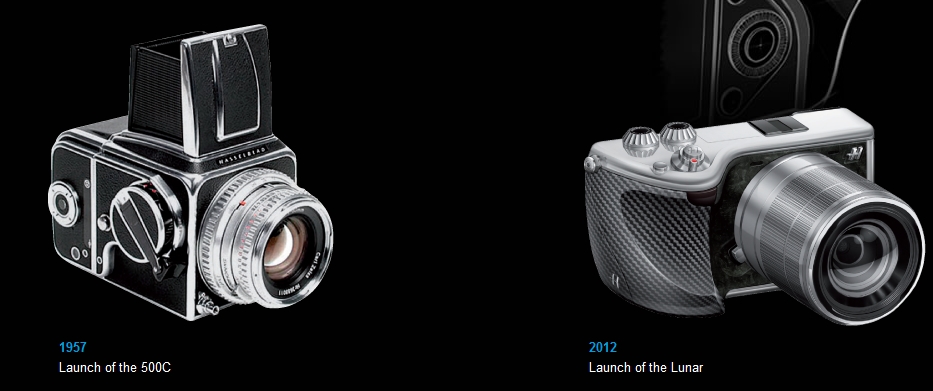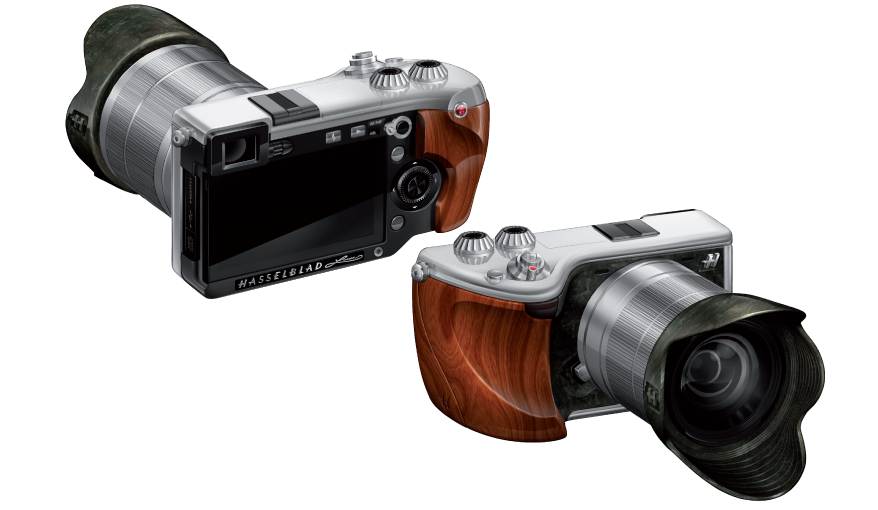Hasselblad Lunar: Vintage and high-tech, with Italian design and Swedish tradition
The legendary Hasselblad 500C of 1957 to be reinterpreted
It was the first camera to go into space – an object of desire for every photographer around the world. Thanks to this camera some of the most evocative and iconic images of our time have been captured.
Swedish manufacturer of medium-format cameras and photographic equipment Hasselblad has entrusted to Lunar the difficult and fascinating task of reinterpreting the legendary 500C of 1957. Hasselblad has announced a revolutionary plan to market a state-of-the-art, Italian-designed ‘ultimate luxury‘ mirrorless, interchangeable lens camera early next year.
Luca Alessandrini Hasselblad’s New Business Development Manager said: “The Lunar is a celebration of the passion that the company’s founder Victor Hasselblad had for photography. We’ve developed this model in the traditional way, using handmade wooden prototypes to ensure superior ergonomics and functionality. This is a camera for both serious photographers and enthusiasts who aspire to shooting with a Hasselblad.”
He added: “Lunar, which can be used in fully automatic or fully manual mode, has been designed to be easy to use and versatile but with all the advanced technology employed in top DSLRs. For the first time the market now has a camera embracing traditional Hasselblad state-of-the-art image capture combined with stunning Italian design features.
And for the first time ever we are using carbon fiber, titanium, wood, leather and precious metals – including gold. The camera grip itself offers unparalleled ergonomics and has been developed to embrace both compact E- mount and the larger professional A-mount lenses.”
Each Hasselblad Lunar camera is a little masterpiece that makes it absolutely unique. Carefully selected raw materials like precious leather and wood are turned into timeless stylish details recalling the know-how of authentic artisan masters. The best Italian wood (beech, olive, pear and mahogany) was selected to create grips that come across like paintings of artistic perfection. Lunar has provided an evocative vintage look with the iconic chrome-plated frame and a total absence of edges.
The Lunar, which is set for launch in the first quarter of 2013, will be priced circa 5000 Euros.
Hasselblad Lunar main specifications includes:
– A complete and diversified lens range for a versatile system.
– DSLR-like performance thanks to the highest technology APS-C 24.3 MP sensor with 25AF points focusing matched to an Ultra fast Processor with real time image process ing and accurate RAW to JPEG translation.
– Instant shutter response (0.02 second release time lag) ten frames per second and an extremely Wide ISO 100 – 16000 range.
– New 24.3 Megapixel APS-C HD CMOS Sensor
– Contrast-Detection autofocusing
– Tracking Focus function
– Fast and precise MF Assist
– Peaking function for focus confirmation
– Precision Digital Zoom
– 1200-zone metering
– Advanced white balance and colour Control
– A set of easy-to-use tools that make taking pictures more fun and entertaining for both expertand novice photographers: Sweep Panorama™ mode, Fifteen picture effects, Hand-held Twilight, Eight Scene Selection, Thirteen Creative Styles, Intelligent Face Registration: party time, Anti Motion Blur mode, Difficult light conditions made easy: Auto HDR and DRO.
– An Innovative TriNavi system for DSLR-like tuning, two flash options and Anti dust system.
The camera equipment carried on the Apollo-11 flight was comprehensive. In addition to the usual TV and small- film cameras on board, there was a special camera for near-distance stereoscopic shots of the moon. And, of course, there were also three Hasselblad 500ELs.
Two of the 500ELs were identical to the ones carried on the Apollo-8, -9 and -10 flights. Each had its own Zeiss Planar f-2.8/80 mm lens. A Zeiss Sonnar f-5.6/250 mm telephoto lens was also carried. One of the conventional 500ELs, along with the telephoto lens and two extra magazines, was in the Apollo-11 Command Module throughout the flight. The other conventional 500EL, and two extra magazines as well, were placed in the lunar module. Also in the lunar module – and making its first journey in space – was a Hasselblad 500EL Data Camera, which was the one to be used on the moon’s surface.



